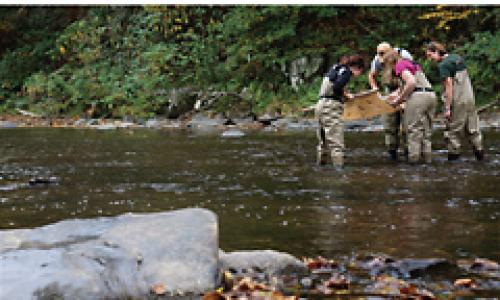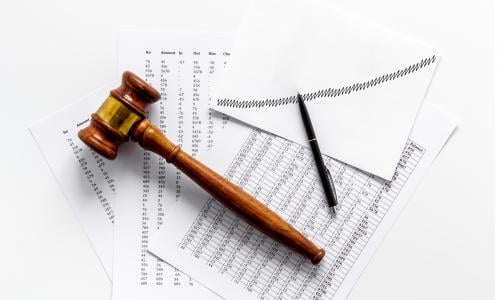A growing body of evidence suggests that democracy in the United States is in peril, from direct attempts to subvert our elections, to the targeted expansion of restrictive election laws, our dysfunctional party system, the dismantling of federal voting rights protections, and a resurgence of antidemocratic populism.
This report lays out a positive vision, pathway, and specific recommendations for addressing these risks and achieving truly multiracial, multiparty democracy in the United States. These recommendations include:
- Securing the integrity of elections
- Countering voter suppression by supporting voter participation
- Reducing barriers to political association
- Expanding representation by increasing assembly sizes
- Designing electoral districts to represent all voters
- Fostering more deliberative policymaking
The report also includes specific recommendations for democracy movement stakeholders, those community organizations, election administration agencies, reform and voting rights groups, and funding organizations whose collaboration is essential if multiracial, multiparty democracy in the US is ever to be realized.
About this report: This report draws from a September 2021 day-long course at the Annual Meeting of the American Political Science Association (APSA) and broadly reflects the concerns and strategies voiced during the course and in the ongoing work of the Center for Science and Democracy’s education and outreach strategies. Many course participants contributed to the report, along with members of the Center's Democracy Reform Scholar-Advocate Council. See the full report for a complete listing of contributors.
Achieving Multiracial, Multiparty Democracy
Executive Summary
This is a condensed, online version of the report. For all figures, references, and the full text, please download the full report PDF.
This report reflects the effort of a unique group of activists, organizers, and scholars dedicated to laying out a positive vision and pathway toward achieving truly multiracial, multiparty democracy in the United States.
Our recommendations focus on supporting community organizations, including local private, nonprofit, and public agencies, and strengthening their capacity to build and leverage the social networks that are crucial to achieving multiracial, multiparty democracy.
We identify six objectives to strengthen local organizations, diversify the electorate, and expand opportunities for political association and deliberation.
Secure the Integrity of Elections
To prevent the direct subversion of elections, local election agencies need to partner with community organizations and experts to produce and share electoral data for transparency, training, and verification. Strengthening organizational capacity can improve election assistance for administrative agencies, as well as relational organizing efforts for community service groups.
At the federal level, legislators should prioritize implementing laws that minimize opportunities for subversive partisan tactics, clarify state procedures for election certification, and punish disinformation and coercion.
Counter Voter Suppression by Supporting Voter Participation
Large-scale, community-centered political organization is necessary to build a coalition to pass federal voting rights protections—a coalition which has yet to materialize. Supporting local communities in long-term, relational organizing efforts is the most effective way to lift up underrepresented voices and build participatory networks through the organizations and agencies that regularly serve target populations.
Coalitions should pursue institutional reforms to reduce the cost of voting and expanding the electorate—including language access, same-day registration, early voting, universal vote-by-mail, and running local elections concurrently with higher-turnout general elections—in parallel to community organizing, where state passage of such legislation is politically viable.
Reduce Barriers to Political Association
Cultivating effective participation requires more than increasing political demand. Expanding electoral supply, by making it easier for candidates and parties to qualify for elections and be named on ballots, will diversify candidate and party choice, increasing the probability that voters have something to vote for.
Expand Representation by Increasing Assembly Sizes
Expanding the size of legislative assemblies, from city councils to the House of Representatives, may be the most direct and effective way to increase the supply of electoral competition. Especially at the local level, the small size of municipal councils in the US limits the number of parties that can effectively compete for office, limiting political association and the ability of like-minded voters to organize politically. Assemblies with more seats increase the likelihood that parties seat women and candidates of color.
Design Electoral Districts to Represent All Voters
District magnitude (the number of seats per district) can constrain representation similar to assembly size. Lowering the threshold of representation—whether through smaller single-seat districts, or larger multiseat districts that allow coalitions to win seats with smaller vote shares—is another crucial component of electoral reform. Ensuring that voters have an equal voice in determining representative outcomes requires basic proportionality in representation.
Foster More Deliberative Policymaking
Deliberative forums enable greater communication between leaders and constituents, and they can better amplify otherwise marginalized community voices. We need greater opportunities for marginalized people to find value in political association if we hope to build a prodemocracy coalition that can defend broader reforms.
Recommendations for Stakeholders
Finally, we have specific recommendations for democracy movement stakeholders: community organizations, election administration agencies, reform and voting rights groups, and funding organizations. Collaboration between these stakeholders is essential if multiracial, multiparty democracy in the US is ever to be realized.
As organizational hubs, community organizations need far greater support and recognition of their role in reconnecting civic capacity to political organization. Greater partnerships to facilitate data sharing and person-to-person organizing, across a variety of neighborhood service providers, are needed to build out inclusive, robust local electoral ecosystems.
Reform organizations, voting rights groups, and funding organizations all need to do a better job of listening to local leaders, supporting their needs, and strengthening the links between public service and political association.
This is a condensed, online version of the report. For all figures, references, and the full text, please download the full report PDF.
Downloads
Citation
Benjamin, Andrea, George Cheung, Lee Drutman, Holly Ann Garnett, Ruth Greenwood, Pedro Hernandez, Kevin Johnson, Michael Latner, Maria Perez, Sam Rosenfeld, Jack Santucci, O. J. Semans, Heather Stoll, Fernando Tormos-Aponte, Alejandra Tres, and Hannah Walker. 2022. Achieving Multiracial, Multiparty Democracy. Cambridge, MA: Union of Concerned Scientists. https://www.ucsusa.org/resources/achieving-multiracial-multiparty-democracy



